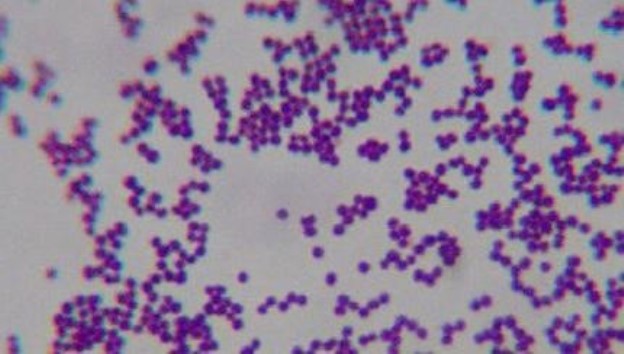The scientists of biological faculty of Moscow State University have discovered a new strain of lactic acid bacteria, known as Lactococcus lactis subsp. lactis 194. In perspective this bacterium can be used as a biological preservative of food products or probiotic.
Probiotics – are microorganisms, for which research has shown that they can be useful for human health. Their function – to normalize the microflora of the internal organs and neutralize microbes that are pathogenic for humans. Most often, probiotics are used to improve the functioning of the digestive system. This definition was introduced by the World Health Organization only in 2002. Probiotics may be incorporated into various foods, medicines and food additives.
Such strain was discovered by Russian scientists. When studying the Lactococcus lactis subsp. lactis 194 it became clear that it has a broad spectrum of activity. It was found that this strain is not only active against Gram-positive bacteria, as in the case with nisin, but also able to inhibit gram-negative bacteria. Moreover, Lactococcus lactis subsp. lactis 194 allows to synthesize antifungal agents that is unique to the lactic acid bacteria of the genus. It is noteworthy that the new strain has been detected in the milk of cows from different farms in Buryatia. Scientists have linked this fact with a unique ecological niche that exists in the Lake Baikal region. This is confirmed by the results of the studying milk from different eco-geographical zones, which revealed a definite strains adaptation of Lactococcus to external environmental factors.
The head of the research group of laboratory of Physiology and Biochemistry of microbes, Sc.D. Lydia Grigor’evna Stoyanova shared details of opening.
Stoyanova L.G.: We have studied the national milk products of therapeutic and prophylactic purposes. It was interesting to learn how the different climatic conditions effect on the physiological and biochemical properties of bacteria. In addition to Russian milk and fermented milk products the samples were studied, brought by students and postgraduates from different countries – Ethiopia, Lebanon, China, Iran, etc. And samples of milk and kurung (a fermented milk product, popular among Mongols and Buryats since the days of Genghis Khan), from which the new strain was isolated, brought my graduate student from Ulan-Ude.
E-Vesti: Tell us more, please, where can the new strain be applied?
Stoyanova L.G.: On this basis, we want to create new biological preservative. We have already experienced it, and it has shown good results. We brought sausage, seeding by fungi. And when we have processed it by our culture, ability to colonization by fungi decreased on sausages. Creating preservative based on Lactococcus lactis subsp. lactis 194 makes it possible to import substitution of expensive foreign drugs, such as Nisaplin (UK) and DelvoCid (Netherlands).
Another direction for the use of the strain – medical. This is a very important area. We want to create a new probiotic preparation for the treatment of nosocomial infections. The fact that there is a worldwide problem – polyresistance of nosocomial infections to antibiotic therapy (resistance of microorganisms to two or more antibiotics). Faculty of Biology, Moscow State University signed an agreement on scientific and technical cooperation with the Federal Scientific Center of Transplantation named after Shumakov. There are cases where the transplant surgery was successful, while the patient can die from a mere hospital infections, such as pneumonia caused by the bacterium Klebsiella. These bacteria have different localization – lungs, wounds, etc. And treat them nothing because of polyresistance. And we entered our strain and achieved growth slowdown of Klebsiella isolated from pulmonary substrate. And this is very encouraging.
E-Vesti: What do you think, when can you create such a drug?
Stoyanova L.G.: It is always very difficult to implement something new. For example, one time I was concerned with not genetic but cell engineering. We have fused protoplasts related strains. And achieved an increase of nisin release by 10-12 times. Received a patent, but did not realize this finding. The patent was maintained in force each year, and this year we did not do it. Because they say, if someone will take it, in principle, it will be still. He will use the invention, and there will be some dividends. Difficulties are in the fact that we have very few hands. Our groups are not large. These are mainly students, postgraduates. But the postgraduates are protecting and do not stay in the university, because low wages. So they go to firms that are happy to take them to work and pay good money.
E-Vesti: In general, funding is not enough?
Stoyanova L.G.: Yes, financing is also not enough. We are the people of the old school, working on enthusiasm from morning till night. And it is all interesting for us, though this interest does not affect on our pocket. We want to get the result, regardless of whether it will be payed or not. For young it is all complicated. They need all. Apartments are expensive, the apartment must be rented.
Moscow state University named Lomonosov, Portal “Business of food ingredients online”




